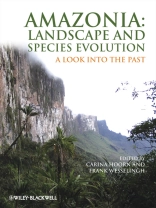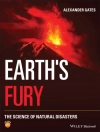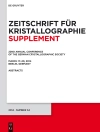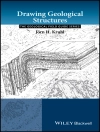The book focuses on geological history as the critical factor in determining the present biodiversity and landscapes of Amazonia. The different driving mechanisms for landscape evolution are explored by reviewing the history of the Amazonian Craton, the associated sedimentary basins, and the role of mountain uplift and climate change.
This book provdes an insight into the Meso- and Cenozoic record of Amazonia that was characterized by fluvial and long-lived lake systems and a highly diverse flora and fauna. This fauna includes giants such as the ca. 12 m long caiman Purussaurus, but also a varied fish fauna and fragile molluscs, whilst fossil pollen and spores form relics of ancestral swamps and rainforests.
Finally, a review the molecular datasets of the modern Amazonian rainforest and aquatic ecosystem, discussing the possible relations between the origin of Amazonian species diversity and the palaeogeographic, palaeoclimatic and palaeoenvironmental evolution of northern South America. The multidisciplinary approach in evaluating the history of Amazonia has resulted in a comprehensive volume that provides novel insights into the evolution of this region.
Tabella dei contenuti
Dedication to Thomas van der Hammen vii
List of contributors ix
Prologue xii
Thomas van der Hammen
1 Introduction: Amazonia, landscape and species evolution 1
Carina Hoorn and Frank P. Wesselingh
Part I Tectonic processes as driving mechanisms for palaeogeographical and palaeoenvironmental evolution in Amazonia
2 Geological evolution of the Amazonian Craton 9
Salomon B. Kroonenberg and Emond W.F. de Roever
3 The Paleozoic Solimões and Amazonas basins and the Acre foreland basin of Brazil 29
Joaquim Ribeiro Wanderley-Filho, Jaime Fernandes Eiras, Paulo Roberto da Cruz Cunha and Paulus H. van der Ven
4 Tectonic history of the Andes and sub-Andean zones: implications for the development of the Amazon drainage basin 38
Andres Mora, Patrice Baby, Martin Roddaz, Mauricio Parra, Stéphane Brusset, Wilber Hermoza and Nicolas Espurt
5 Cenozoic sedimentary evolution of the Amazonian foreland basin system 61
Martin Roddaz, Wilber Hermoza, Andres Mora, Patrice Baby, Mauricio Parra, Frédéric Christophoul, Stéphane Brusset and Nicolas Espurt
6 The Nazca Ridge and uplift of the Fitzcarrald Arch: implications for regional geology in northern South America 89
Nicolas Espurt, Patrice Baby, Stéphane Brusset, Martin Roddaz, Wilber Hermoza and Jocelyn Barbarand
Part II Cenozoic Depositional Systems in Amazonia
7 The Amazonian Craton and its influence on past fluvial systems (Mesozoic-Cenozoic, Amazonia) 103
Carina Hoorn, Martin Roddaz, Rodolfo Dino, Emilio Soares, Cornelius Uba, Diana Ochoa-Lozano and Russell Mapes
8 The development of the Amazonian mega-wetland (Miocene; Brazil, Colombia, Peru, Bolivia) 123
Carina Hoorn, Frank P. Wesselingh, Jussi Hovikoski and Javier Guerrero
9 Marine influence in Amazonia: evidence from the geological record 143
Jussi Hovikoski, Frank P. Wesselingh, Matti Räsänen, Murray Gingras and Hubert B. Vonhof
10 Megafan environments in northern South America and their impact on Amazon Neogene aquatic ecosystems 162
M. Justin Wilkinson, Larry G. Marshall, John G. Lundberg and Mikhail H. Kreslavsky
11 Long-term landscape development processes in Amazonia 185
Georg Irion and Risto Kalliola
Part III Amazonian Climate, Past and Present
12 Climate variation in Amazonia during the Neogene and the Quaternary 201
Hubert B. Vonhof and Ron J.G. Kaandorp
13 Modelling the response of Amazonian climate to the uplift of the Andean mountain range 211
Pierre Sepulchre, Lisa C. Sloan and Frédéric Fluteau
14 Modern Andean rainfall variation during ENSO cycles and its impact on the Amazon drainage basin 223
Bodo Bookhagen and Manfred R. Strecker
Part IV Cenozoic Development of Terrestrial and Aquatic Biota: Insights from the Fossil Record
15 A review of Tertiary mammal faunas and birds from western Amazonia 245
Francisco Ricardo Negri, Jean Bocquentin-Villanueva, Jorge Ferigolo and Pierre-Olivier Antoine
16 Neogene crocodile and turtle fauna in northern South America 259
Douglas Riff, Pedro Seyferth R. Romano, Gustavo Ribeiro Oliveira and Orangel A. Aguilera
17 The Amazonian Neogene fish fauna 281
John G. Lundberg, Mark H. Sabaj Pérez, Wasila M. Dahdul and Orangel A. Aguilera
18 Amazonian aquatic invertebrate faunas (Mollusca, Ostracoda) and their development over the past 30 million years 302
Frank P. Wesselingh and Maria-Inês F. Ramos
19 The origin of the modern Amazon rainforest: implications of the palynological and palaeobotanical record 317
Carlos Jaramillo, Carina Hoorn, Silane A.F. Silva, Fatima Leite, Fabiany Herrera, Luis Quiroz, Rodolfo Dino and Luzia Antonioli
20 Biotic development of Quaternary Amazonia: a palynological perspective 335
Hermann Behling, Mark Bush and Henry Hooghiemstra
Part V Modern Perspectives on the Origin of Amazonian Biota
21 Contribution of current and historical processes to patterns of tree diversity and composition of the Amazon 349
Hans ter Steege, ATDN (Amazon Tree Diversity Network: collective author) and RAINFOR (The Amazon Forest Inventory Network: collective author)
22 Composition and diversity of northwestern Amazonian rainforests in a geoecological context 360
Joost F. Duivenvoorden and Alvaro J. Duque
23 Diversification of the Amazonian flora and its relation to key geological and environmental events: a molecular perspective 373
R. Toby Pennington and Christopher W. Dick
24 Molecular studies and phylogeography of Amazonian tetrapods and their relation to geological and climatic models 386
Alexandre Antonelli, Adrián Quijada-Mascareñas, Andrew J. Crawford, John M. Bates, Paúl M. Velazco and Wolfgang Wüster
25 Molecular signatures of Neogene biogeographical events in the Amazon fish fauna 405
Nathan R. Lovejoy, Stuart C. Willis and James S. Albert
Part VI Synthesis
26 On the origin of Amazonian landscapes and biodiversity: a synthesis 421
Frank P. Wesselingh, Carina Hoorn, Salomon B. Kroonenberg, Alexandre Antonelli, John G. Lundberg, Hubert B. Vonhof and Henry Hooghiemstra
Index 433
Circa l’autore
Carina Hoorn is a paleoecologist who studied geology and holds a Ph D from the University of Amsterdam (The Netherlands) and an MSc in Science Communication (Imperial College, London). Currently she is liaised to the University of Amsterdam and her main research interests are Amazonia, the Himalayas, Tibet, and the coastal lagoons of Oman.
Frank Wesselingh is a molluscan palaeontologist who studied geology at the Vrije Universiteit (Amsterdam, The Netherlands) and holds a Ph D from the University of Turku (Finland). Frank works at Naturalis, the Natural History Museum in Leiden (The Netherlands), and his research interests are fossil molluscan faunas of long-lived lakes, the North Sea Basin and the Indo-West Pacific.












